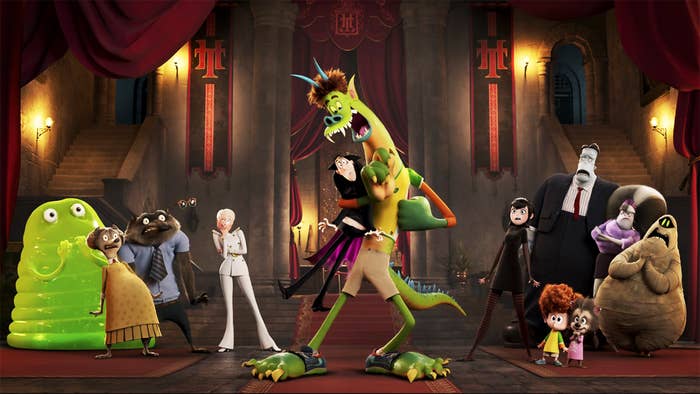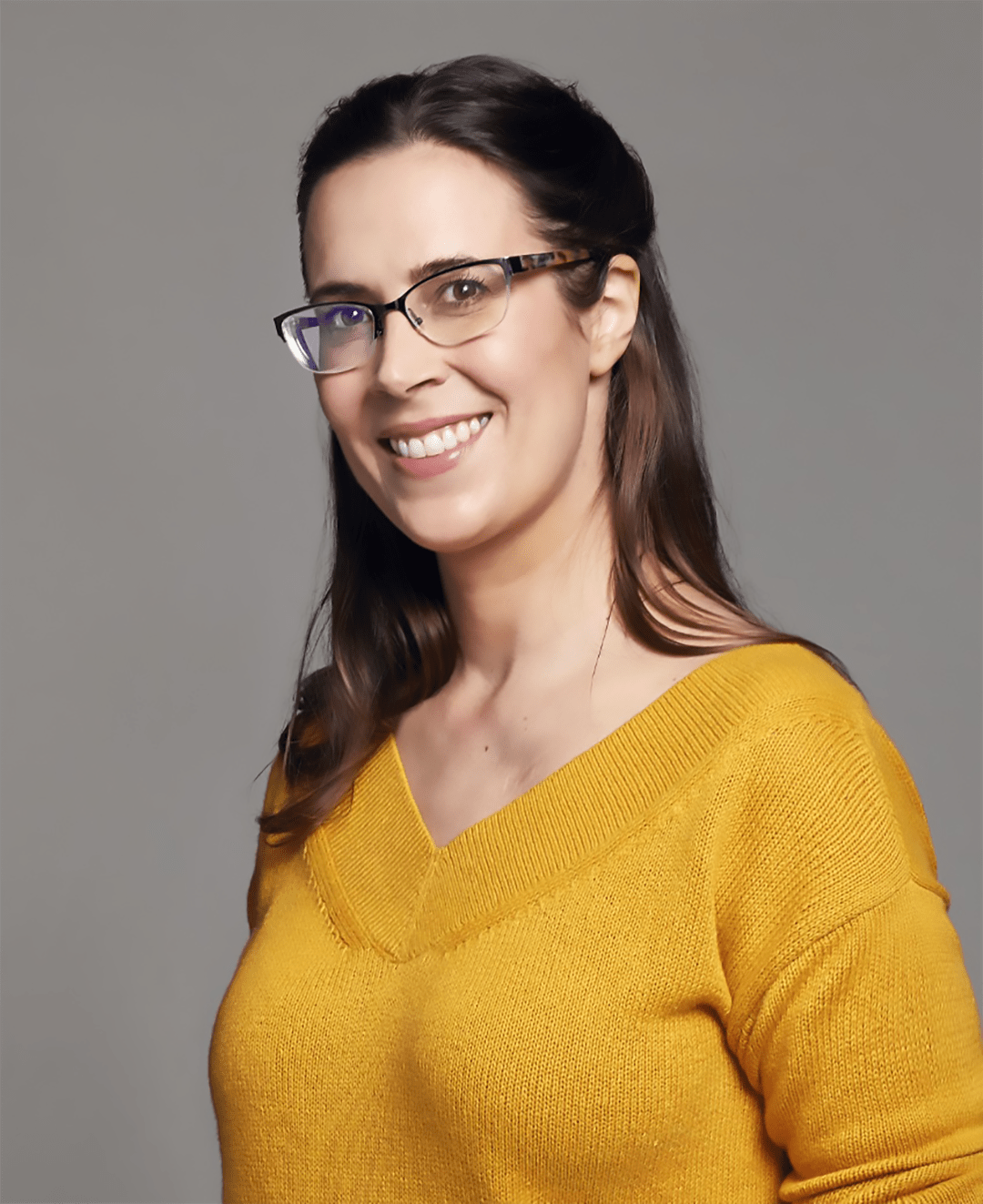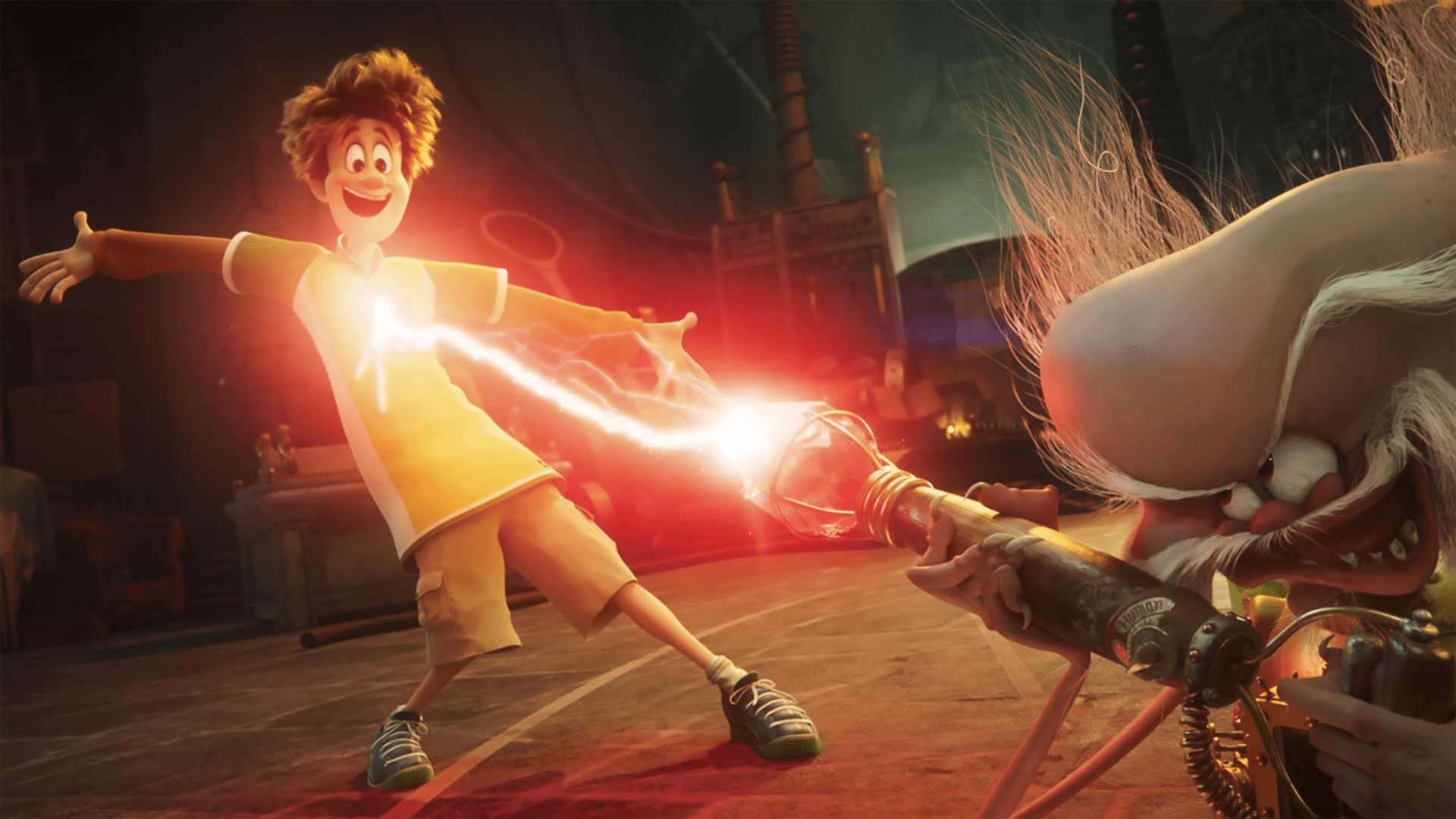
Canadian animation veteran Jennifer Kluska has been enjoying a successful career in the industry for the last two decades. After graduating from Sheridan College, she landed a job as a story artist on DreamWorks’ Bee Movie and her long list of credits include work on Cloudy with a Chance of Meatballs 2, Smurfs: The Lost Village, and Hotel Transylvania 2 and 3, and directing television series DC Super Hero Girls and Wild Kratts. Now, she takes on her first feature directorial debut with Hotel Translyvania: Transformania, which features stars like Andy Samberg, Selena Gomez, and Kathryn Hahn.
The director shares that “the one thing about this franchise that is unique is that it really is sort of a love letter to animation and the animation process, and specifically to traditional animation, and the jokes and the characters all are sort of in service to a very pure form of physical animated comedy that you don’t see a lot of.”
We caught up with Kluska to talk about her time at Sheridan, working on the final chapter of the beloved franchise, and her advice to those who want to work in animation.
You’ve previously been on the animation side of Hotel Transylvania before now directing. What was this transition like for you?
It was really great and it was great to do it on a franchise that I sort of had such a long history on. So in one sense, it feels sort of natural. And of course, I directed in TV before but feature is a very different beast. But everyone was great at Sony, everyone has so much love for the Hotel Transylvania franchise. I feel like everyone was just super excited to jump back into it again. So that was really lovely.
Having worked on this franchise for so long, and this being the epic conclusion for a well-loved franchise, what was most important to you when it came to telling this story?
I think it was a couple of things. First of all, knowing that it was the ending, you of course want to be able to see and do justice to all the characters that people have really loved through now for films. When you have a cast as large as it is, getting everyone to sort of have that moment was important. But also, when you’re making the film, you really want to give the audience something that they haven’t seen before and [present] the characters in a way that is familiar, but also new and interesting. So the idea that every one of the Hotel Transylvania franchises, they’re all about like different parts of your life. Like the first one is about Drac being a father and having to deal with his daughter growing up for the first time. And then the second one is about being a new parent and being a grandparent. The third one is about sort of new love and discovering that again, and then the fourth one, it felt like well, up to this point of his life, where he’s going to be considering retiring, changing, and like the idea that you’re taking on this new stage of your life, and what does that mean for you? What does that mean for how you see yourself as a person? And so we would take Drac and put him through a scenario where he totally has to change and then come back felt like that was really fun thematically, but also gave the audience something exciting to look at. So that’s how the idea of Transformania came about.

This was also your first time directing a feature animated film. What was your biggest challenge?
I think the biggest challenge was kind of more of a technical one, just the pipeline that you have to learn going into feature is very different from working in TV and in TV… you kind of have your one kick of the can and that’s kind of it. In feature, it really is like all these really amazingly talented people coming together and each step of the process sort of lifts it in a way that you didn’t expect. So I think being open and being able to sort of absorb all these great ideas and all these sort of additive processes from all the people who are involved is something that was both really great and really surprising at the same time.
“I would say advice would be to network and really to, I don’t know if I can say this, but like kind of like don’t be a dick. You’re going to meet the same people over and over again.”
I loved seeing the characters transform and when our favourite monsters reverse. Speaking of the characters that we love, who did you have the most fun transforming?
Definitely Johnny, a hundred percent, because I think with everyone else you’re a little bit familiar with the rules of monsters. You have Drac, who’s a vampire, so he’s not going to look that different, he’s going to be a human. So now we’ve sort of played with the idea that he kind of really sort of begins to lose all his powers. So like, what does that mean? Someone who’s in control and loses his powers, how is he feelins? He gets very vulnerable. But then the other characters that kind of each have one joke, where, Frank is a collection of body parts. So he becomes a really handsome man, you’ve got the hairy wolf man becoming kind of a hairy dude. Then also the idea that an ancient mummy would become an ancient sort of person… and then of course, the Griffin, because you only see his glasses, has been wearing nothing at all. But Johnny is a character who could literally be anything. And so he was really the most fun to play with, with what sort of monster he could be, and how could we make him feel like the giant that we love, even though he looks totally different?

You have a fantastic cast as well—Andy Samberg, Steve Buscemi and Selena Gomez. What was it like to transition to working with them as a director?
Well, first there’s the idea that you’re working with all of these amazing actors, these comedians and someone like Steve Buscemi, who was an absolute legend. But then also, there’s a scenario where because we were doing this movie during a pandemic we’re seeing these guys in their closets because we can’t get to a recording studio. So it was a very strange disconnect sometimes of just when you kind of step back and realize this sort of almost absurd situation that you’re in. You kind of can’t help but laugh.
Having graduated from Sheridan College, what was your experience like and how did it prepare you for the industry with how animated films are made and spearheaded?
Well, here’s the thing. When I was at Sheridan, I was in the classical animation program. And the year I graduated, or the year before I graduated, I can’t remember when but classical animation, meaning hand-drawn animation, effectively died. And so there was a big question of like, what are we going to do? What are our careers going to look like? It was very new; I don’t think there was even really a CG program at Sheridan yet, it was all very sort of unknown territory. I think what you do learn very quickly was that the basis of filmmaking and in the basis of storytelling stays universal, and those skills sort of translate no matter what the medium is. But at first, it was a little scary. And I think hands-on learning is just going to be the nature of the industry for the foreseeable future. Because streaming has also become a very big change in how the TV market works. So, I think the industry is perpetually going to be changing and change is just a constant that you always have to learn to embrace.
How did you land your first job once you graduated from Sheridan?
So I think what’s interesting about the industry is that everyone’s story about how they got into the industry is going to be different. There’s a way in which I can sort of track my story to basically graduating from Sheridan, and getting accepted into the story internship program at DreamWorks. And that was certainly very huge in the industry; you’re sort of launching to feature right away, and you’re meeting all these amazing people who can make your contacts for the rest of your life. And that was amazing. And that was certainly like a huge part of it for me. But there’s a smaller story that I like to tell, which I think is actually a little bit almost more fun, which is that when I was in high school in Ontario, OAC was still a thing. And part of OAC was that you could do co-op, and I’m not sure that still a thing, honestly, in high school, but at the time it was and my art teacher got me a co-op position at an animation studio in Ottawa. My job was basically pegging safety copies for shipping, which is basically to take the Android animation, and register the safety copies, and create these animation folders for the overseas studio.
But the point is that after I’d gotten into Sheridan, I ended up taking a gap year, there was some family illness that we were dealing with. So I had gone to school, but sort of deferred it for a year. And I was working at Tim Hortons. And my supervisor at this co-op position ran into me at Tim Hortons and said, “Hey, we’re moving house, we’re looking for some new positions, why don’t you come and talk to people?” And I went in and I ended up getting a job as a storyboard revisionist during this gap year. So I had this amazing year, where I was doing storyboard revisions, and really learning about the nature of story and the process of animation. Like really, really early on. I think that foundation really sort of set me up in my mind, at least for everything else that happened afterwards.

That’s great to hear! Do you have any animation career advice for those who want to follow in your footsteps?
Well, I think the biggest thing that story shows is that you never know where your big opportunity is going to come from; you never know what is that thing that’s going to sort of be the domino that knocks over everything else. So I would say just be very open and be very ready to interact with the people who you work with. I would say reach out to people, and people in the animation industry are some of the most amazing, passionate people that I’ve ever met. They just they love the industry so much and they love talking about it and they want to see people do well… most of the opportunities I’ve gotten in my life have not been me submitting my portfolio. It’s been people that I’ve worked with sort of hearing, “Oh, this position’s available, Jen might be available. Let’s see if it works out.” You end up moving through the industry with these people who you are going to meet over and over again for your whole career and you might see someone you know 10 years from now or two years now, but it’s amazing how everyone just wants to support everyone within the industry. So I would say my advice would be to network and really to, I don’t know if I can say this, but like kind of like don’t be a dick. You’re going to meet the same people over and over again.
What would you like the audience to take away from this final love letter to the franchise?
Hotel Transylvania franchises have always been about family and family at different stages and families that grow and I think this iteration, especially, sort of touches on the fact that family can look a lot of different ways and can incorporate a lot of different people, whether it’s a new stepmother or son-in-law, and that’s just really a beautiful thing.


